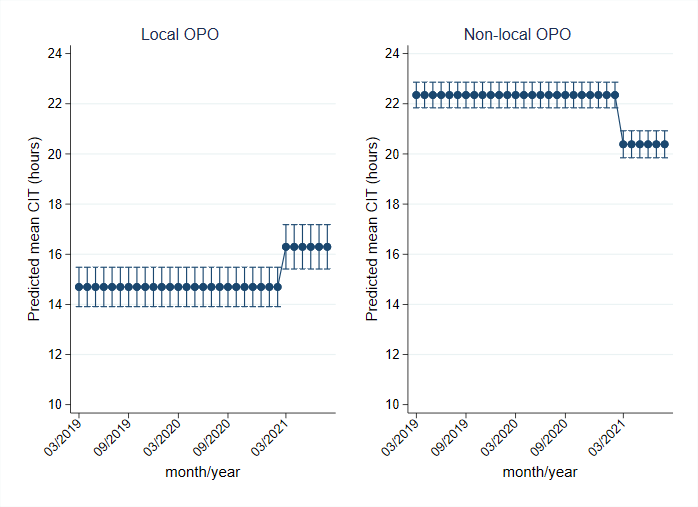Changes in Cold Ischemia Time and Transplantation Practices with the Concentric Model of Kidney Allocation
1University of Pittsburgh Medical Center, Pittsburgh, PA, 2Columbia University, New York, NY
Meeting: 2022 American Transplant Congress
Abstract number: 5
Keywords: Allocation, Ischemia, Kidney transplantation, Resource utilization
Topic: Clinical Science » Kidney » 31 - Kidney Deceased Donor Allocation
Session Information
Session Name: Kidney Deceased Donor Allocation
Session Type: Rapid Fire Oral Abstract
Date: Sunday, June 5, 2022
Session Time: 3:30pm-5:00pm
 Presentation Time: 3:30pm-3:40pm
Presentation Time: 3:30pm-3:40pm
Location: Hynes Ballroom C
*Purpose: Evaluate impact of the new concentric kidney allocation system (KAS250) on kidney utilization, allocation practices and cold ischemia time (CIT).
*Methods: Using data from the Scientific Registry of Transplant Recipients (SRTR), we compared allocation practices (kidney exports, pump use, biopsy, virtual crossmatch and discards) and characteristics of deceased kidney donors and recipients after KAS250 (3/15/21-8/31/21) to a cohort from the preceding two years (3/15/19-03/14/21). Multiorgan transplants were excluded. Virtual crossmatch was defined as lack of a prospective cell-based crossmatch. Difference in CIT and delayed graft function (DGF) incidence pre- and post-KAS250 was evaluated using multivariable regression models that adjusted for donor and recipient factors.
*Results: There were 61,668 retrieved kidneys (49,560 pre-KAS250 and 13,108 post-KAS250) that yielded 38,760 kidney alone transplants (31,419 pre-KAS250 and 7,341 post-KAS250). Compared to pre-KAS250, post-KAS250 donor cohort had more kidneys exported out of local organ procurement organization (OPO) (29% vs 60%;p<0.001), more DCD donors(25% vs 29%;p<0.001) but had similar KDPI (48 vs 49), pump use (41% vs40%) and donor biopsy(56% vs 57%). Discards increased from 21% to 23%(p<0.001). Virtual crossmatch use increased post-KAS250 (24% vs 29%;p<0.001) driven mostly by use of retrospective cell-based crossmatch. Recipients did not differ by race or kidney disease etiology, but had longer dialysis duration(median 39 vs 43 months,p<0.001) post-KAS250. Median CIT increased to 19 hours (vs 17 hours; p<0.001), due to a combination of more import kidneys and longer CIT(17 vs 15 hours) even for local OPO kidneys. Virtual crossmatch was associated with shorter CIT, both among local (14 vs 15hours;p<0.001) and import (21 vs 22 hours; p<0.001) kidneys. DGF incidence increased from 28% to 30% which remained significant in multivariable analysis.
*Conclusions: Early trends following KAS250 implementation suggest positive trends in recipient characteristics and use of DCD organs but with an increase in CIT and DGF. This will require close monitoring and protocol modifications (such as increasing virtual crossmatch use) to improve efficiency.
The data reported here have been supplied by the Hennepin Healthcare Research Institute as the contractor for SRTR. The interpretation and reporting of these data are the responsibility of the author(s) and in no way should be seen as an official policy of or interpretation by the SRTR or the U.S. Government.
To cite this abstract in AMA style:
Puttarajappa CM, Sood P, Tevar A, Gunabushanam V, Hariharan S, Mohan S. Changes in Cold Ischemia Time and Transplantation Practices with the Concentric Model of Kidney Allocation [abstract]. Am J Transplant. 2022; 22 (suppl 3). https://atcmeetingabstracts.com/abstract/changes-in-cold-ischemia-time-and-transplantation-practices-with-the-concentric-model-of-kidney-allocation/. Accessed December 15, 2025.« Back to 2022 American Transplant Congress

